
They say you can never go back. Especially after you’ve been gone a long time. Things change. You change. Memories live on in your brain, scenes and events immortalized within. They say as you age the short-term memory goes, but the long-term memory lingers. Maybe that bodes well for senile reminiscing on early life adventures. Maybe I won’t remember this most recent trip.
I have written many times how I learned to fish the fly on a small creek near Caliente, Nevada, called Beaver Dam Creek. The fishable portion of the creek is contained within the boundaries of Nevada’s Beaver Dam State Park, but the eastern border is shared with the state of Utah. My deceased brother Neal told me of this creek and the joy he had fishing it. To this day I remain entranced by a photo of a male rainbow in spawning regalia that Neal had caught in the 1970s. It was not a large trout by my current standards, but it was a wild trout of significant proportions for Beaver Dam. That creek provided the basis for all I leaned about the sport during those early years, as I wrote in a prevoius Beaver Dam Creek blog.
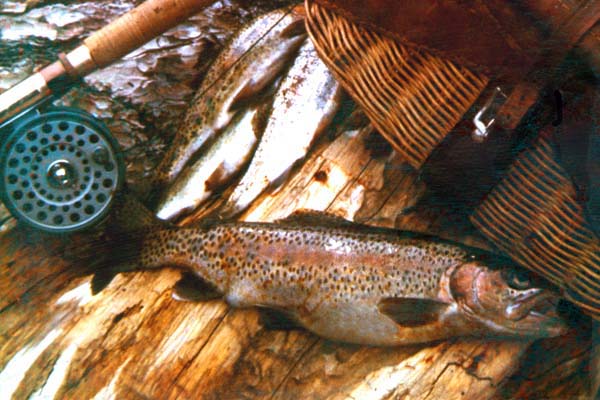
In 2005 the dam was breached and the reservoir drained in a controlled fashion. The earthen dam was leaking and the Nevada Park Service was concerned that it would fail resulting in a dangerous flood. (Ranchers live downstream from the park, not to mention the residents of Beaver Dam, Arizona, where the creek enters the Virgin River.) My last visit was in 2002, and I had not returned since the reservoir was drained. Through correspondence with the park staff I knew the creek still supported trout, and I was curious to see for myself what it had become without the reservoir. This past Labor Day I succumbed to a spontaneous desire to make a day trip.
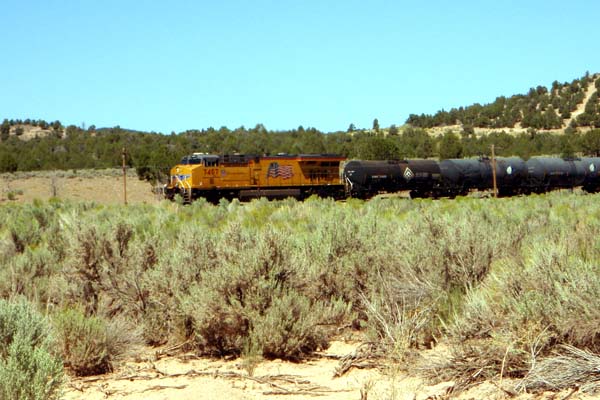
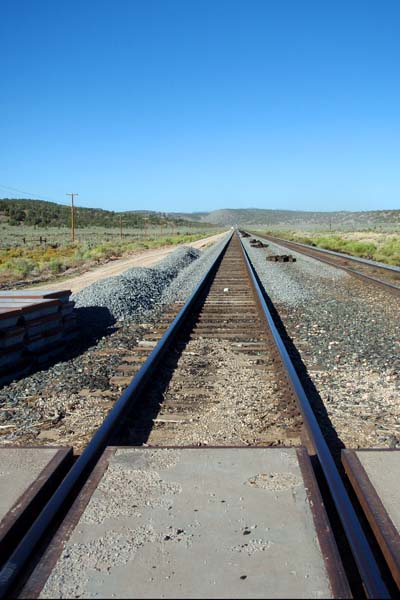
I left the house at 5:00am and arrived at the park before 8:00am. The Trout Truck (a term of endearment for my 2007 Dodge Dakota quad cab 4×4) descended into the canyon below the reservoir site and then cut over and back onto an access road that carved into the canyon wall, obviously cut there when the dam was built in 1961. A gate forced me to park at the top of a little outcropping from the canyon wall, from where I continued the decent to the creek on foot. I then crossed the creek and walked downstream on the access road on the other side. My intention was to get below the pool from where I remembered always starting my upstream fishing until reaching the first pool fed by the reservoir’s concrete spillway. I’m sure in length it’s less than a quarter mile. Although the daytime temperature seemed warm, I doubt it ever reached ninety degrees. It felt cool when I was in the shade, but uncomfortably warm in full sun; certainly wearing hip waders over jeans with a long-sleeved canvas shirt over a T-shirt did not help.
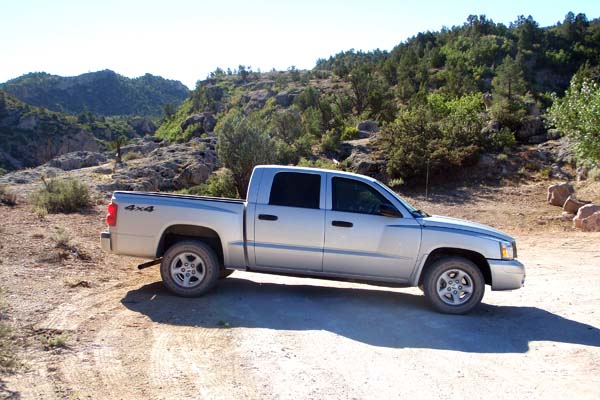
At several points along the access roads on both sides of the creek it became obvious that the riparian vegetation was different than the 1980s. The breaching of the dam had brought much sand and silt through the little canyon and consequently seemed to foster excessive willow growth. Willows choked the creek so much that most casting had to be done while in the creek. The creek was much narrower, and in the few places it did spread out it was very shallow. Deep pools, large enough to support several fish, were few and far between. All the consistently productive pools I recalled, pools that used to produce four or five trout of eight to ten inches, and occasionally up to twelve inches, were altered so much that for all intents and purposes they were gone.
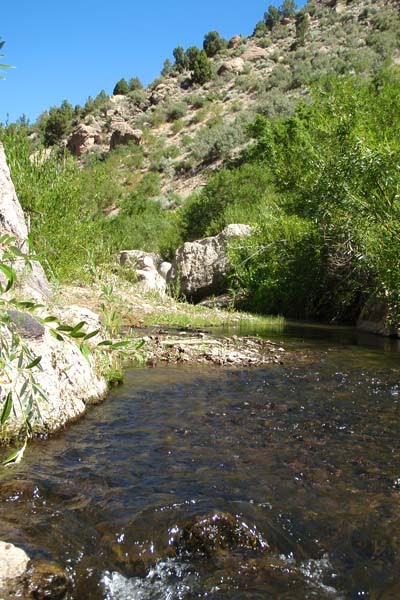
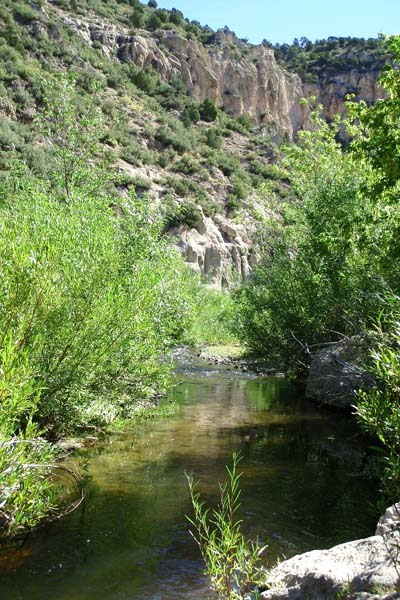
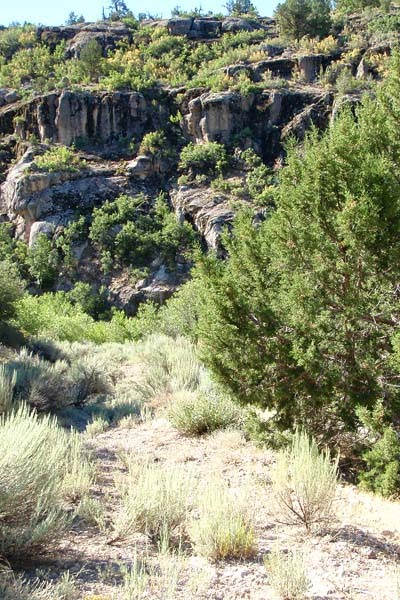
Still, one does not drive three hours to a creek and not fish, so fish I did. And Beaver Dam did have fish. I did not count, but I landed at least ten, and lost several others. So as not to mislead you, the fish I lost were not due to their hefty weight and hard fighting, but rather that their mouths were so small that they likely never got all of the hook shank into their mouths. My smallest was less than two inches, and I doubt the largest reached eight inches. And while to some extent catching fish of any size can at least be entertaining, fighting dense willows and rock-hopping along was much more work than I anticipated for the pleasure of whipping rainbow fingerlings out of a creek on a six-foot, four-weight fly rod.
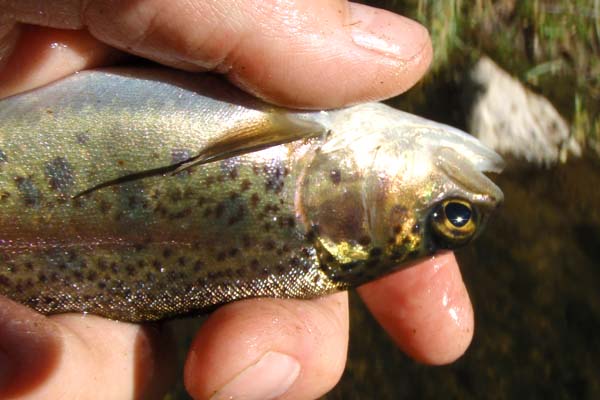
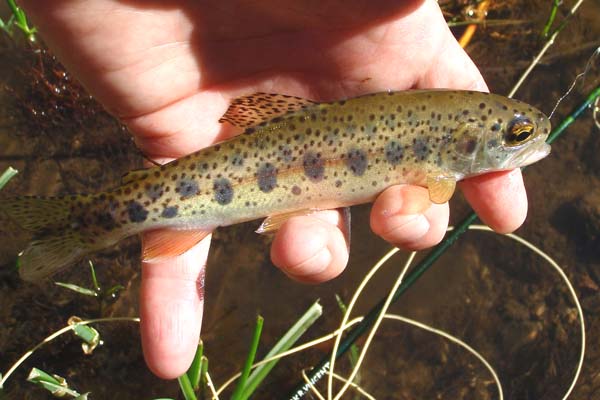
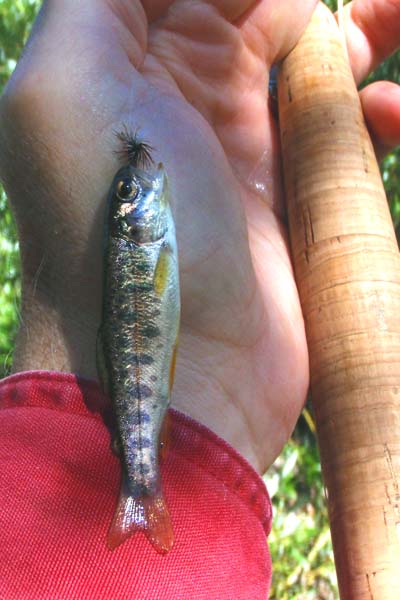
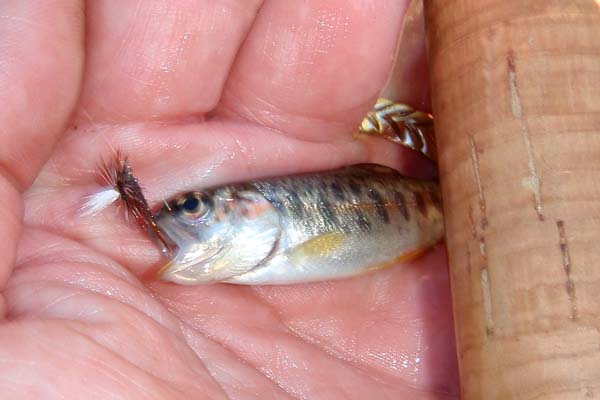
Nonetheless, I did make my journey all the way to the site of the old spillway pool. Obviously it was gone, but I don’t think I was prepared for what was left behind. In person it seemed like a moonscape of sorts, wide and barren of much of anything. The creek was cut deep into the sand and silt left over from the bottom of the reservoir. It clearly couldn’t contain any trout as it was shallow and without the streamside vegetation and cover necessary for trout.
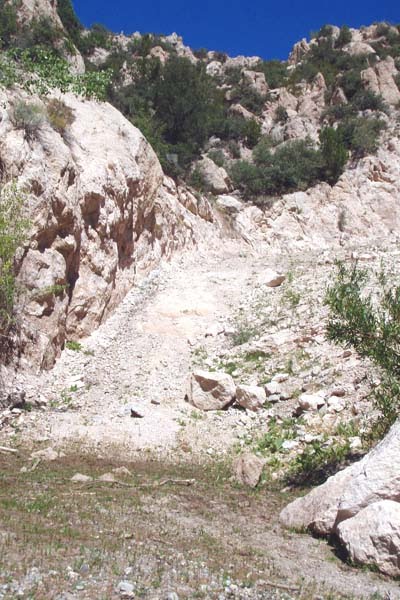

Making my way back to the truck I began to realize that not only had the creek changed significantly over this past decade, but I was having a much harder time scrambling over rocks, negotiating through the dense vegetation, and hiking up the steep canyon walls. My body was tired and sore. Had I caught a few ten-inch trout in the pools and pockets I had etched in my memory it would have been worth it all. But I had not.

So, things change. Nothing of this world will last in this world. Those of us not of this world have the eternal promise of life with the Father, and that’s what sustains us with the hope of new life after death. As Solomon wrote in Ecclesiastes 3, “There is a time for everything, and everything on earth has its special season.” Beaver Dam Creek’s special season may be over for my lifetime, but I was surely blessed by it in the 1980s, and the Lord has provided so much more since then that I doubt I’ll revisit Beaver Dam again, but rather hold on to those rich and warm memories. They say you can’t go home, but they are wrong.
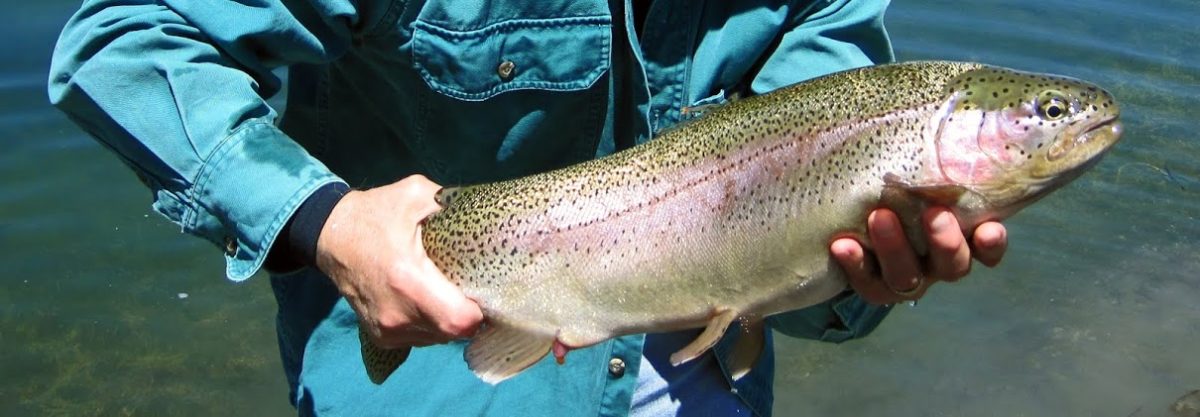
Hey there Fisherdad. Great fish and writing. Ive been fly fishing about a year after someone put a fly rod in my hand on an alaskan trip, fell in love. Went to a guide school to learn everything i can. I am always looking for new brains to pick on fishable water and always looking for a fishing parter. really intrigued by Cold Creek. Any info you have would be great. thanks a l
TightLinez —
I’ve written several blogs on Cold Creek and have dealt with several questions about useful flies/techniques on the Cold Creek pond in the comment section of those blogs. The trout are stocked semi-annually, and the pond is so small and shallow that I’m not sure it matters what you present to them. They usually stock trout in the 9 to 10 inch range, so small flies are best. I don’t use anything over size 14 on Cold Creek. There are no 18-inch “lunkers” in there; the largest I’ve ever seen is maybe 12 to 13 inches. Furthermore, the pond doesn’t support large aquatic insects like stoneflies, damsels, or dragonflies, but mostly small gnats and maybe some caddis flies. Read some of the comments (especially to “Jared” and “Rob”) on this list of Cold Creek blogs and you’ll get a more complete picture of Cold Creek:
https://www.fisherdad.com/2010/04/24/cold-creek-nevada/
https://www.fisherdad.com/2010/02/15/cold-creek-nevada-2/
https://www.fisherdad.com/2009/10/31/cold-creek-pond-clark-county-nevada/
https://www.fisherdad.com/2006/11/04/cold-creek-clark-co-nv/
Also, the blog has a search engine on the top of the page so you can always perform a search exclusive to my blog.
All the best.
— Mark
good chance ill head up to beaver dam creek this weekend.i dont fly fish though, i use a 3 foot pole with spinners, and i pretty much only enjoy creeks… ill let you know how it goes…
Awesome. Will definitely let you know!
This should be a great time to visit it. Please let me know what you thought of it.
it was nice… although we caught some snow…
i brought the family so i couldn't dive into the creek as much as i liked, however there were so many fish that i didn't really have to…. caught 5 keepers in about 2 hours just in the little section by the road fishing upstream a bit. threw back probably 10 or so… most were small, the biggest i got was probably about 12".
tons of fish in there… and we were the only people in sight…. i assume because the time of year.
they showed no interest in my black and orange spinner… but got real excited over black, yellow, gold panther martin.
they were a bit feisty, jumping a lot once i had them on my line… was a good time!
are there only rainbows in there?
do i find cool stuff if i go a bit up or downstream?
again, thank for the awesome blog!
Great, sounds like a good first trip to Beaver Dam Creek.
Yes, upstream is an interesting hike. There is a topo map on the bottom of the “Beaver Dam Creek, the Early Years” post, and three pictures of the upper reaches buried in the middle. On the topo at the bottom of that post, find the blue Schroeder Reservoir right above the red words, “Oak Knoll”. About a half-mile up from where the campsite road terminates at the creek above the old Schroeder Reservoir, the creek splits into two tributaries. The left (west) fork of the creek flows down from the old Hamblin Ranch area, whereas the right (east) fork flows down from Utah’s Pine Park Canyon. Hiking about 4 miles up that fork will get you to Split Pine Hollow. The east branch (Pine Park) has lots of wild, reproducing rainbows, and best of all it offers much seclusion.
To my knowledge, there are only rainbows in this drainage. Traveling father downstream the creek gets shallower and eventually reaches farming communities. Fish upstream from where the lower Park road reaches the creek below the old Schroeder Reservoir site.
Going back to the “Early Years” post, find the three pictures, right in a row, starting with a picture of Split Pine Hollow with distant cottonwoods in the canyon and the creek in the foreground, followed by a trio of small rainbows on grass with a fly rod, and ending with my wife standing next to an orange backpack underneath a cottonwood. Starting from the bottom-up, the creek where my wife stands is between where the old reservoir inlet was and where the creek forks into west/east branches. The next picture of the trout was from the Split Pine Hollow very near the Nevada-Utah border (nice wild fish). The top of the three was taken from the southeast end of the Hollow looking northwest (obviously). This spot is about 4 miles of easy hiking upstream; a great backpack camp site with lots of good holes to fish.
Thank you for sharing your Beaver Dam experience.
awesome, thanks again… sounds like next time i should hike up a bit more and find split pine hollow!
this time my 6 year old daughter was trailing me, didnt want to make it to difficult for her.
will definitely be back…
—-
have you ever been to antimony creek in utah? i havent been in a long time, but was awesome, though alot of dense brush to power through.
i also been looking at trying out a campground in utah called "blue spruce campground" apparently next to a creek called "pine creek".
wish i had more time for stuff like this…
FisherDad,
That's been my favorite creek to fish in winter dating back to about 2000. I usually fish in Utah above Motoqua. The road is much rougher than to the park but in a few dozen trips my dogs and I haven't encountered another person. The scenery is spectacular with some basalt canyon walls. Sometimes the fish are scarce but many trips I'll catch a couple dozen easy. 2 winters ago I caught my first cutthroat in there but I understand above the park there more common. The rainbow have ranged from 2 inches all the way to 15 inches. Most trip the largest will be 10-12 inch range. Most of the Utah side is wide open and stealth is the key. If you don't scare them off they'll hit about any nymph. Dries and even hoppers can pick up by March. Great place to fish on a warm sunny winter day. Reminds me a bit of small creek fishing in Western Wyoming during the summer.
Paul –
Thanks so much for the post. Beaver Dam Creek is a remote little thing, isn’t it? I assume you’ve read all three posts on that water, but if not check out this post: https://www.fisherdad.com/2002/08/15/beaver-dam-creek-the-early-years/. In that blog, towards the middle, is a picture deep in the canyon with the caption, “Backpack camp with Kevin near Utah border, spring 1977.” When I took that picture I was standing right about where Split Pine Hollow creek meets with Pine Park Canyon creek, about 500 yards west of the Utah border. The 2013 Google Earth imagery shows two good-sized beaver bonds in the section of the canyon.
Fascinated to hear there are cutthroat upstream from there in Utah. Exactly where is Motoqua in relation to Pine Park Canyon? It appeared well south of Beaver Dam State Park, much farther south of Pine Park Canyon, when I Googled it.
Wish I had the leg’s to backpack up there again. All the best!
— FisherDad